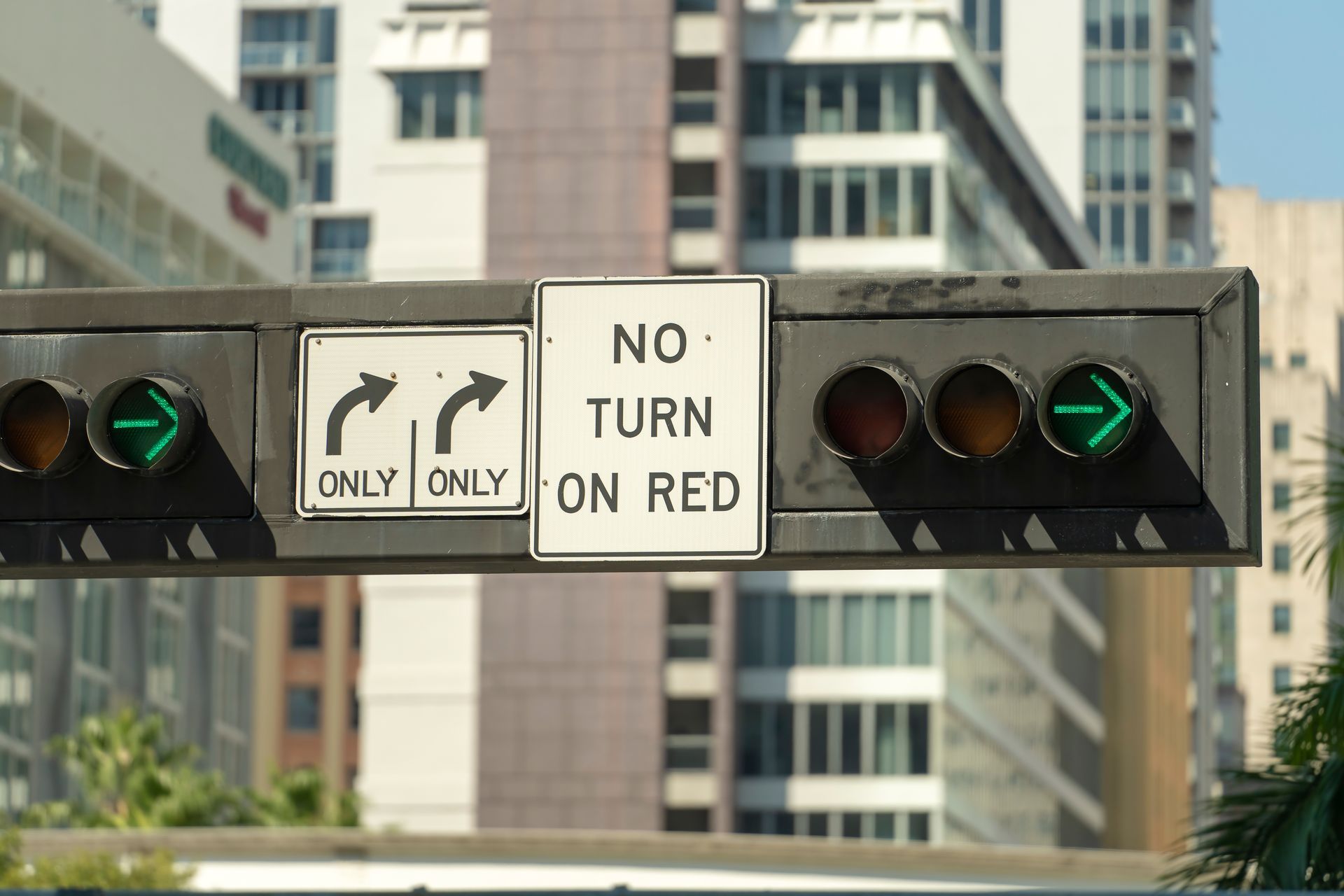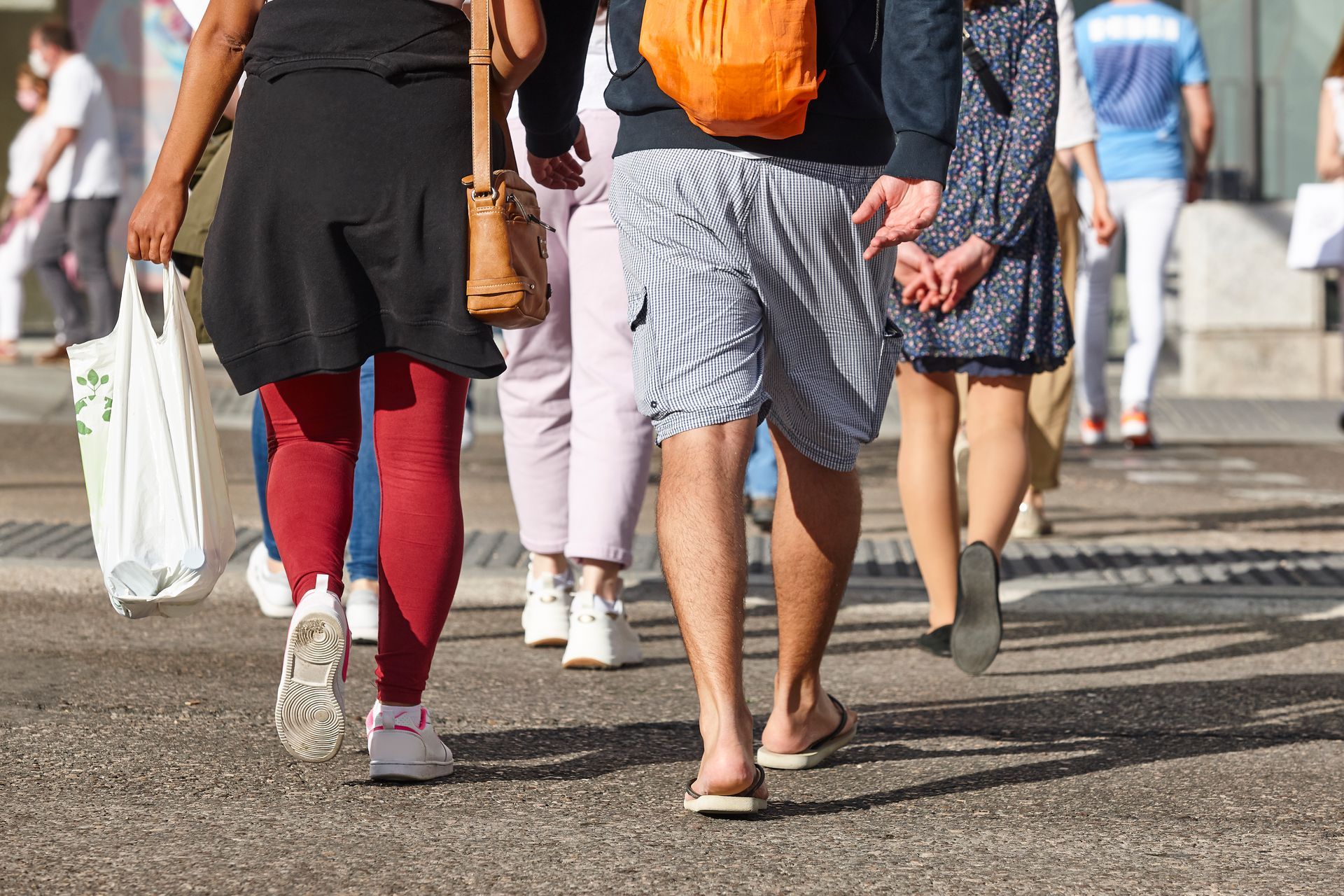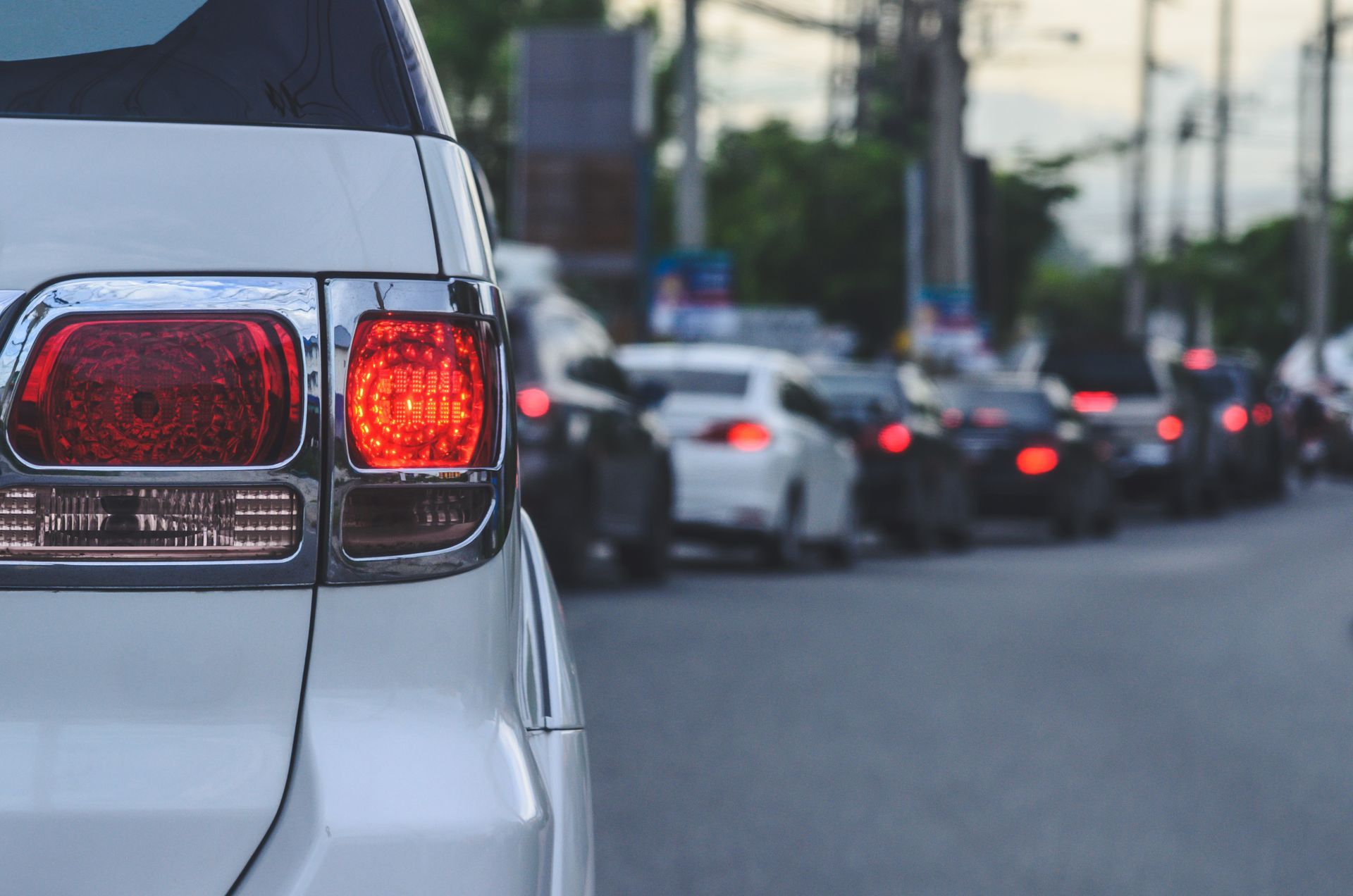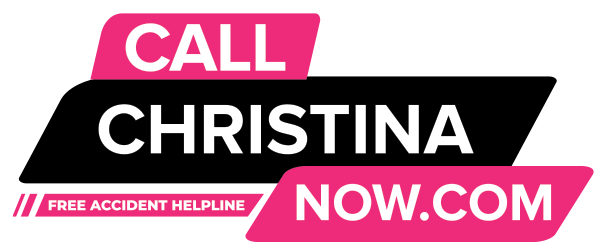Don't Call Christina Later, Call Christina Now
Follow us
Understanding the Importance of No Right-Hand Turn Signs
Why "No Right Turn" Signs Matter:
Understanding Their Role in Road Safety
Have you ever been driving and encountered a "No Right Turn" sign? These signs might seem straightforward, but their presence can significantly impact traffic flow, safety, and road regulation compliance. While they may seem like an inconvenience at first, they’re actually put in place for very specific reasons. In this blog, we’ll explore the importance of "No Right Turn" signs, why they exist, and how they contribute to road safety—backed by statistics that show how these measures improve our streets.
Why "No Right Turn" Signs Matter:
Understanding Their Role in Road Safety
Have you ever been driving and encountered a "No Right Turn" sign? These signs might seem straightforward, but their presence can significantly impact traffic flow, safety, and road regulation compliance. While they may seem like an inconvenience at first, they’re actually put in place for very specific reasons. In this blog, we’ll explore the importance of "No Right Turn" signs, why they exist, and how they contribute to road safety—backed by statistics that show how these measures improve our streets.

What Does a
"No Right Turn" Sign Mean?
A "No Right Turn" sign indicates that drivers are not allowed to make a right-hand turn at a specific intersection. This regulation is often implemented to improve safety, reduce traffic congestion, or ensure that traffic flows in an orderly manner. These signs can be found in various locations, including busy urban areas, intersections with high pedestrian traffic, or places where a right turn would be particularly dangerous.
What Does a "No Right Turn" Sign Mean?
A "No Right Turn" sign indicates that drivers are not allowed to make a right-hand turn at a specific intersection. This regulation is often implemented to improve safety, reduce traffic congestion, or ensure that traffic flows in an orderly manner. These signs can be found in various locations, including busy urban areas, intersections with high pedestrian traffic, or places where a right turn would be particularly dangerous.

What Does a "No Right Turn" Sign Mean?
A "No Right Turn" sign indicates that drivers are not allowed to make a right-hand turn at a specific intersection. This regulation is often implemented to improve safety, reduce traffic congestion, or ensure that traffic flows in an orderly manner. These signs can be found in various locations, including busy urban areas, intersections with high pedestrian traffic, or places where a right turn would be particularly dangerous.

Why Do "No Right Turn" Signs Exist?
While it might be frustrating to encounter a "No Right Turn" sign, there are several key reasons why they are placed on certain streets and intersections:
Why Do "No Right Turn" Signs Exist?
While it might be frustrating to encounter a "No Right Turn" sign, there are several key reasons why they are placed on certain streets and intersections:
Safety Concerns: Right-hand turns at some intersections can be dangerous, especially in areas with heavy pedestrian traffic, cyclists, or limited visibility. According to the National Highway Traffic Safety Administration (NHTSA), in 2019, over 6,000 pedestrians were killed in traffic accidents in the U.S. Many of these accidents occur at intersections, where distracted drivers often fail to notice pedestrians in their path.
Improving Traffic Flow: In areas where multiple roads converge, allowing right-hand turns can create traffic bottlenecks or lead to congestion. A study conducted by the Federal Highway Administration (FHWA) found that optimizing traffic flow by limiting certain turns can reduce congestion by up to 20% in busy urban areas during peak traffic hours. By restricting turns, traffic is better managed, ensuring smoother and faster flows, especially during rush hour.
Protecting Pedestrians and Cyclists: In busy urban areas, intersections with heavy foot traffic are common. Areas with high pedestrian activity see a significant increase in accidents due to vehicle-pedestrian conflicts. According to the Centers for Disease Control and Prevention (CDC), 26% of all traffic-related deaths in the U.S. are pedestrian-related. A "No Right Turn" sign helps reduce the risk of these incidents by keeping drivers from turning into pedestrian-heavy zones.
Creating Space for Public Transportation: In some locations, right-hand turns might interfere with bus or tram lanes. A report by the American Public Transportation Association (APTA) noted that efficient public transportation operations are crucial for reducing traffic congestion, and measures like restricting turns at key intersections help buses and trams avoid delays caused by turning traffic.
Preventing Dangerous U-Turns: In some instances, drivers may try to make a right-hand turn and then immediately perform a U-turn to head in the opposite direction. The Insurance Institute for Highway Safety (IIHS) reports that improper turning and lane changes are involved in nearly 10% of all fatal crashes. By restricting right turns, cities can reduce confusion and prevent accidents caused by drivers trying to bypass the traffic flow.
Safety Concerns: Right-hand turns at some intersections can be dangerous, especially in areas with heavy pedestrian traffic, cyclists, or limited visibility. According to the National Highway Traffic Safety Administration (NHTSA), in 2019, over 6,000 pedestrians were killed in traffic accidents in the U.S. Many of these accidents occur at intersections, where distracted drivers often fail to notice pedestrians in their path.
Improving Traffic Flow: In areas where multiple roads converge, allowing right-hand turns can create traffic bottlenecks or lead to congestion. A study conducted by the Federal Highway Administration (FHWA) found that optimizing traffic flow by limiting certain turns can reduce congestion by up to 20% in busy urban areas during peak traffic hours. By restricting turns, traffic is better managed, ensuring smoother and faster flows, especially during rush hour.
Protecting Pedestrians and Cyclists: In busy urban areas, intersections with heavy foot traffic are common. Areas with high pedestrian activity see a significant increase in accidents due to vehicle-pedestrian conflicts. According to the Centers for Disease Control and Prevention (CDC), 26% of all traffic-related deaths in the U.S. are pedestrian-related. A "No Right Turn" sign helps reduce the risk of these incidents by keeping drivers from turning into pedestrian-heavy zones.
Creating Space for Public Transportation: In some locations, right-hand turns might interfere with bus or tram lanes. A report by the American Public Transportation Association (APTA) noted that efficient public transportation operations are crucial for reducing traffic congestion, and measures like restricting turns at key intersections help buses and trams avoid delays caused by turning traffic.
Preventing Dangerous U-Turns: In some instances, drivers may try to make a right-hand turn and then immediately perform a U-turn to head in the opposite direction. The Insurance Institute for Highway Safety (IIHS) reports that improper turning and lane changes are involved in nearly 10% of all fatal crashes. By restricting right turns, cities can reduce confusion and prevent accidents caused by drivers trying to bypass the traffic flow.
Safety Concerns: Right-hand turns at some intersections can be dangerous, especially in areas with heavy pedestrian traffic, cyclists, or limited visibility. According to the National Highway Traffic Safety Administration (NHTSA), in 2019, over 6,000 pedestrians were killed in traffic accidents in the U.S. Many of these accidents occur at intersections, where distracted drivers often fail to notice pedestrians in their path.
Improving Traffic Flow: In areas where multiple roads converge, allowing right-hand turns can create traffic bottlenecks or lead to congestion. A study conducted by the Federal Highway Administration (FHWA) found that optimizing traffic flow by limiting certain turns can reduce congestion by up to 20% in busy urban areas during peak traffic hours. By restricting turns, traffic is better managed, ensuring smoother and faster flows, especially during rush hour.
Protecting Pedestrians and Cyclists: In busy urban areas, intersections with heavy foot traffic are common. Areas with high pedestrian activity see a significant increase in accidents due to vehicle-pedestrian conflicts. According to the Centers for Disease Control and Prevention (CDC), 26% of all traffic-related deaths in the U.S. are pedestrian-related. A "No Right Turn" sign helps reduce the risk of these incidents by keeping drivers from turning into pedestrian-heavy zones.
Creating Space for Public Transportation: In some locations, right-hand turns might interfere with bus or tram lanes. A report by the American Public Transportation Association (APTA) noted that efficient public transportation operations are crucial for reducing traffic congestion, and measures like restricting turns at key intersections help buses and trams avoid delays caused by turning traffic.
Preventing Dangerous U-Turns: In some instances, drivers may try to make a right-hand turn and then immediately perform a U-turn to head in the opposite direction. The Insurance Institute for Highway Safety (IIHS) reports that improper turning and lane changes are involved in nearly 10% of all fatal crashes. By restricting right turns, cities can reduce confusion and prevent accidents caused by drivers trying to bypass the traffic flow.
Where Are "No Right Turn" Signs Commonly Found?
You’ll typically see "No Right Turn" signs in the following locations:

- Busy intersections: High traffic areas or those with multiple roads converging often require turn restrictions to prevent bottlenecks and improve traffic flow.
- Near schools or playgrounds: Areas with heavy pedestrian or child traffic are prime spots for these signs to ensure the safety of pedestrians.
- In urban areas with lots of parking: Narrow streets or areas where parking spaces are limited may require right-turn restrictions to prevent accidents and congestion.
- Close to public transportation routes: Areas with bus or tram lanes may use these signs to allow smoother transportation and reduce traffic interference.

- Busy intersections: High traffic areas or those with multiple roads converging often require turn restrictions to prevent bottlenecks and improve traffic flow.
- Near schools or playgrounds: Areas with heavy pedestrian or child traffic are prime spots for these signs to ensure the safety of pedestrians.
- In urban areas with lots of parking: Narrow streets or areas where parking spaces are limited may require right-turn restrictions to prevent accidents and congestion.
- Close to public transportation routes: Areas with bus or tram lanes may use these signs to allow smoother transportation and reduce traffic interference.
What Happens If You Ignore a "No Right Turn" Sign?
Ignoring a "No Right Turn" sign is a violation of traffic laws and can result in serious consequences:
Traffic Fines: In most places, ignoring a "No Right Turn" sign can lead to fines or citations. Law enforcement officers are vigilant in monitoring high-traffic areas, and running a red light or ignoring turn restrictions is an easy way to get a ticket. In 2019, nearly 200,000 drivers in the U.S. were fined for disregarding traffic signs, including turn restrictions.
Increased Accident Risk: Ignoring the sign and making an illegal right turn can lead to accidents, especially if the turn was prohibited for safety reasons. According to the National Safety Council (NSC), intersection-related crashes account for over 40% of all motor vehicle accidents in the U.S. Many of these accidents could be avoided if turn restrictions are followed.
Disrupting Traffic Flow: Failing to adhere to turn restrictions can create confusion for other drivers, causing traffic delays, accidents, or even road closures if the situation escalates. The American Traffic Safety Services Association (ATSSA) reports that improper turns contribute to traffic disruptions and delays in urban centers, especially during rush hour.
Insurance Consequences: If you cause an accident while violating a traffic rule like ignoring a "No Right Turn" sign, your insurance premiums may rise, or your claim may be denied altogether. Insurance companies report that violations of traffic laws are one of the leading causes for increased premiums after an accident.
Traffic Fines: In most places, ignoring a "No Right Turn" sign can lead to fines or citations. Law enforcement officers are vigilant in monitoring high-traffic areas, and running a red light or ignoring turn restrictions is an easy way to get a ticket. In 2019, nearly 200,000 drivers in the U.S. were fined for disregarding traffic signs, including turn restrictions.
Increased Accident Risk: Ignoring the sign and making an illegal right turn can lead to accidents, especially if the turn was prohibited for safety reasons. According to the National Safety Council (NSC), intersection-related crashes account for over 40% of all motor vehicle accidents in the U.S. Many of these accidents could be avoided if turn restrictions are followed.
Disrupting Traffic Flow: Failing to adhere to turn restrictions can create confusion for other drivers, causing traffic delays, accidents, or even road closures if the situation escalates. The American Traffic Safety Services Association (ATSSA) reports that improper turns contribute to traffic disruptions and delays in urban centers, especially during rush hour.
Insurance Consequences: If you cause an accident while violating a traffic rule like ignoring a "No Right Turn" sign, your insurance premiums may rise, or your claim may be denied altogether. Insurance companies report that violations of traffic laws are one of the leading causes for increased premiums after an accident.
What Should You Do If You Encounter a "No Right Turn" Sign?
If you come across a "No Right Turn" sign, here are some important things to keep in mind:

- Look for Alternative Routes: Take a moment to assess the road ahead and plan your route accordingly. There are often alternative streets or routes that allow you to reach your destination without violating traffic laws.
- Follow the Traffic Signals: Pay close attention to all traffic signals and road signs. They are there to guide you and ensure that you follow the safest and most efficient route.
- Stay Calm: It can be frustrating to encounter a "No Right Turn" sign, especially if you’re in a hurry. But remember, the sign is in place for a reason, and following it helps ensure your safety and the safety of others on the road.
- Be Patient and Respectful of Pedestrians: If you are unsure about the restrictions, it’s better to err on the side of caution. Wait until you’re sure that it's safe to proceed in the direction allowed.

- Look for Alternative Routes: Take a moment to assess the road ahead and plan your route accordingly. There are often alternative streets or routes that allow you to reach your destination without violating traffic laws.
- Follow the Traffic Signals: Pay close attention to all traffic signals and road signs. They are there to guide you and ensure that you follow the safest and most efficient route.
- Stay Calm: It can be frustrating to encounter a "No Right Turn" sign, especially if you’re in a hurry. But remember, the sign is in place for a reason, and following it helps ensure your safety and the safety of others on the road.
- Be Patient and Respectful of Pedestrians: If you are unsure about the restrictions, it’s better to err on the side of caution. Wait until you’re sure that it's safe to proceed in the direction allowed.
Although "No Right Turn" signs may seem like an inconvenience at times, they are an essential part of ensuring safe, smooth, and efficient traffic flow. These signs are designed with the well-being of all road users in mind, from pedestrians and cyclists to other drivers. By respecting these signs and following the rules of the road, we can help create safer streets for everyone.
If you’ve encountered a traffic situation and have questions or need guidance, don’t hesitate to contact us. We’re here to help you navigate the rules of the road and ensure your safety. Reach out today and let us assist you in understanding the importance of traffic regulations!
Although "No Right Turn" signs may seem like an inconvenience at times, they are an essential part of ensuring safe, smooth, and efficient traffic flow. These signs are designed with the well-being of all road users in mind, from pedestrians and cyclists to other drivers. By respecting these signs and following the rules of the road, we can help create safer streets for everyone.
If you’ve encountered a traffic situation and have questions or need guidance, don’t hesitate to contact us. We’re here to help you navigate the rules of the road and ensure your safety. Reach out today and let us assist you in understanding the importance of traffic regulations!
Quick & Reliable
We are available 24/7 to Guide You to Better Health.
CALL CHRISTINA NOW is here to help 24 hours a day, 7 days a week, offering free and compassionate support. When you call us, we'll listen to your concerns, understand the specifics of your accident, help you find medical care for your injuries, and connect you with a professional who can advise you on the legal aspects of your situation.
CALL CHRISTINA NOW specializes in assisting with Lawyer and Medical Accident matters. If you've been in a car, motorcycle, or truck accident—or any other kind of accident—contact us today for trustworthy support.
DISCLAIMER:
CALL CHISTINA NOW isn't a law firm and can't provide legal advice, but we can refer you to the right attorney who can.
All Rights Reserved | Call Christina Now
Copyright © Call Christina Now Offers All Rights Reserved 2025
View Our Privacy Policy | Terms & Conditions | Disclaimer
